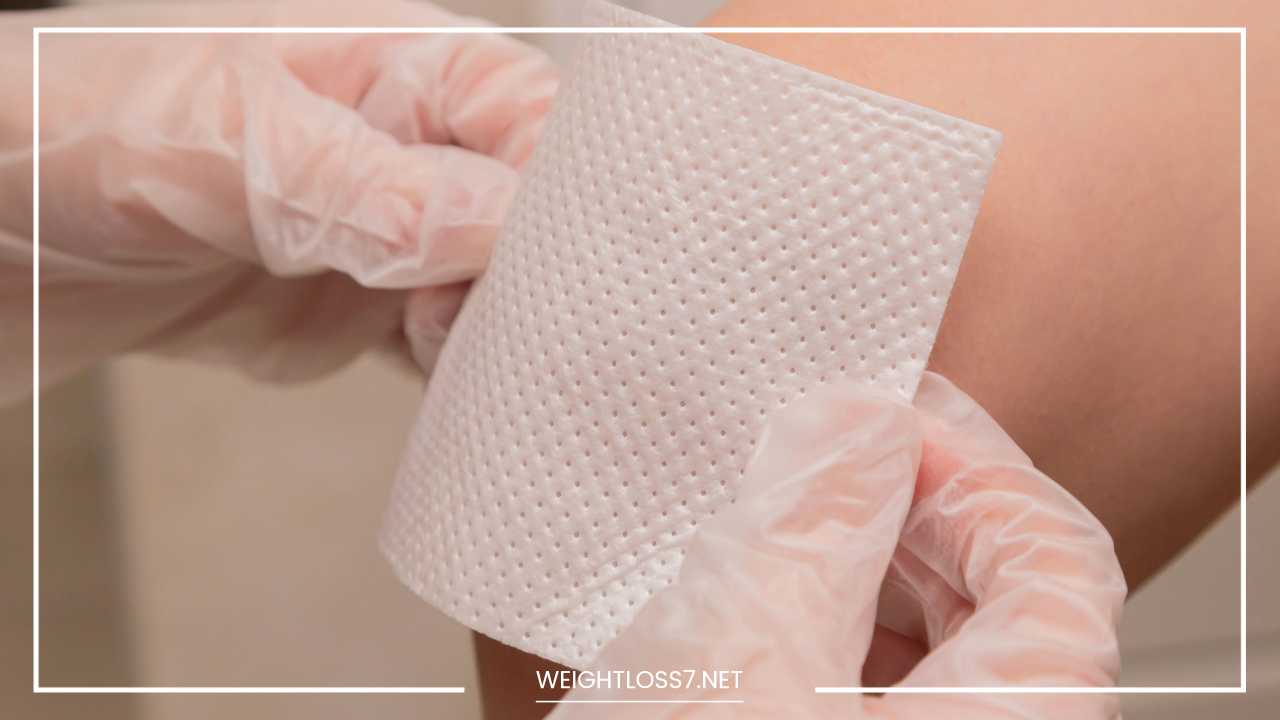Osteoarthritis: Understanding & Taking Charge

Osteoarthritis
Osteoarthritis: Understanding the Grind and Taking Back Control
Osteoarthritis (OA) – the name might conjure images of rusty hinges and worn-out machinery. And that’s not entirely inaccurate. Often referred to as “wear and tear arthritis,” OA is the most common form of arthritis, affecting an estimated 54 million adults in the United States alone .
It’s a condition that progressively breaks down the cartilage, the smooth, cushioning tissue that protects the ends of your bones where they meet in a joint.
This breakdown can lead to a symphony of unwelcome sensations in your joints, including:
- Pain: This can range from a dull ache to a sharp, stabbing pain, often worse with activity and improving with rest.
- Stiffness: This is especially noticeable in the mornings or after periods of inactivity. It might feel like your joints are locked in place, making it difficult to get moving.
- Swelling: Inflammation in the joint can cause it to become puffy and tender to the touch.
- Loss of flexibility: The range of motion in your joint may become limited, making it harder to perform everyday tasks.
- Grinding sensation: This is a hallmark symptom of OA, often described as a grating or crunching sound when you move the joint. It’s caused by the bones rubbing against each other without the protective cushion of cartilage.
While OA can affect any joint in the body, it most commonly targets the knees, hips, hands, and spine. These joints bear significant weight and stress during daily activities, making them more vulnerable to the wear and tear associated with OA.
Who’s Most Susceptible to the Grind?
Anyone can develop OA, but certain factors increase your risk:
- Age: As we age, our cartilage naturally thins and weakens. This makes OA more likely to occur later in life.
- Previous joint injury: Injuries like fractures, ligament tears, and meniscus damage can damage the cartilage and accelerate the development of OA.
- Obesity: Excess weight puts extra stress on weight-bearing joints like the knees and hips, leading to faster cartilage breakdown.
- Genetics: Some people are simply more predisposed to OA due to their genes.
- Joint overuse: Repetitive stress on a particular joint, especially in occupations or sports that involve a lot of bending, kneeling, or heavy lifting, can contribute to OA.
- Muscle weakness: Weak muscles around the joint can’t adequately support it, increasing stress on the cartilage.
- Certain metabolic conditions: Conditions like diabetes can affect how your body uses sugar, potentially leading to inflammation and cartilage damage.
Living with Osteoarthritis: It’s Not Just About Rest
Unfortunately, there’s no cure for OA. However, the good news is there are many effective ways to manage it and maintain an active lifestyle. Here are some key strategies to combat the grind and take back control:
- Exercise: Don’t let OA keep you on the couch! Regular physical activity is crucial for strengthening the muscles around your joints. Strong muscles provide better support and stability, reducing stress on the cartilage. Low-impact exercises like swimming, walking, biking, and water aerobics are excellent choices as they are gentle on your joints. Consider incorporating activities like yoga or tai chi to improve flexibility and balance.
- Weight management: If you’re overweight or obese, losing even a small amount of weight can significantly reduce stress on your weight-bearing joints and improve your symptoms. Talk to your doctor about creating a safe and effective weight loss plan.
- Physical therapy: A physical therapist can be your partner in managing OA. They can create a personalized exercise program tailored to your specific needs and limitations. This program might include exercises to improve flexibility, strength, range of motion, and balance. Physical therapists can also teach you techniques to improve your posture and body mechanics, helping to reduce stress on your joints during daily activities.
- Pain management: Over-the-counter pain relievers like acetaminophen and ibuprofen can help manage pain and inflammation. Topical creams with capsaicin or menthol may also provide temporary relief. In some cases, your doctor may recommend stronger pain medications, prescription-strength topical creams, or injections such as corticosteroids or hyaluronic acid to provide localized pain relief and lubrication.
- Heat and cold therapy: Applying heat to stiff joints before activity can help loosen muscles and improve flexibility. Conversely, applying ice after activity can reduce inflammation and pain. Experiment to see which approach works best for you.
- Joint support: Using braces or splints can help stabilize and support your joints, particularly when you’re performing activities that aggravate your OA. Talk to your doctor or physical therapist about which type of support might be right for you.
- Assistive devices: Using canes, walkers, or other assistive devices can help take pressure off your joints and improve your mobility, allowing you to stay active and independent for longer.
Osteoarthritis: Embracing a Holistic Approach
Living with OA goes beyond just managing physical symptoms. Here are some additional strategies to consider for a more holistic approach:
- Nutrition: Eating a healthy, balanced diet rich in fruits, vegetables, whole grains, and lean protein can provide your body with the nutrients it needs to repair and maintain tissues, including cartilage. Omega-3 fatty acids, found in fatty fish like salmon and tuna, may also help reduce inflammation. Consider limiting processed foods, sugary drinks, and unhealthy fats, as these can contribute to inflammation.
- Supplements: While there’s no single magic bullet supplement for OA, some options may offer some relief. Glucosamine and chondroitin sulfate are natural components of cartilage and have shown some promise in reducing pain and improving function in some studies. However, the evidence is mixed, and it’s important to discuss these options with your doctor before starting any supplements. Turmeric, containing the curcumin compound, also possesses anti-inflammatory properties and may be worth exploring with your doctor.
- Stress management: Chronic stress can worsen inflammation and pain perception. Techniques like deep breathing exercises, meditation, and yoga can all be helpful for managing stress and improving overall well-being.
- Sleep: Getting enough quality sleep is essential for overall health and pain management. Aim for 7-8 hours of sleep each night and practice good sleep hygiene habits, such as establishing a regular sleep schedule, creating a relaxing bedtime routine, and maintaining a cool, dark sleep environment.
- Complementary and alternative therapies: Some people find relief from OA symptoms with complementary and alternative therapies such as acupuncture, massage therapy, and tai chi. While the evidence for their effectiveness in OA management varies, they may be worth exploring in conjunction with conventional treatments, always with your doctor’s approval.
- Occupational therapy: If your OA affects your ability to perform daily tasks, an occupational therapist can help you find ways to adapt your work environment or home life to minimize stress on your joints. They can teach you strategies to use tools and equipment more efficiently and safely, while also helping you conserve energy and reduce fatigue.
- Support groups: Connecting with others who understand the challenges of living with OA can be incredibly helpful. Support groups can provide a safe space to share experiences, learn from others, and offer encouragement.
The Road Ahead: Research and Emerging Therapies
Researchers are constantly looking for new ways to diagnose, treat, and potentially even prevent OA. Here are some promising areas of ongoing research:
- Regenerative medicine: Therapies aimed at stimulating cartilage repair or regeneration are being explored. This may involve injecting stem cells or other growth factors into the joint.
- Gene therapy: This approach aims to modify genes that contribute to the development of OA.
- Biologics: These are drugs derived from living organisms that target specific inflammatory pathways involved in OA.
- Non-surgical joint replacement: Procedures are being developed to replace damaged joint surfaces with materials other than traditional metal or plastic implants.
The Power of Knowledge and Advocacy
By educating yourself about OA, you can become a more empowered partner in your own healthcare. Talk to your doctor regularly about your condition, ask questions, and express any concerns you may have. Don’t hesitate to seek a second opinion if you feel your needs aren’t being adequately addressed.
Additionally, consider advocating for yourself and others with OA. There are many organizations dedicated to OA research, education, and advocacy. You can get involved by supporting these organizations, raising awareness about the condition, and even participating in clinical trials to help advance research efforts.
Living with OA can be challenging, but with a proactive approach that combines conventional therapies, healthy lifestyle choices, and a positive outlook, you can effectively manage your symptoms, maintain an active lifestyle, and live well.
Remember, knowledge truly is power. Embrace the journey of understanding and managing your OA, and take control of your health and well-being.
Osteoarthritis: A Deeper Dive into Specific Joints
While OA can affect any joint, some areas are more commonly targeted than others. Here’s a closer look at OA in specific joints:
-
Knee OA: This is the most prevalent form of OA, often causing pain, stiffness, and swelling in the knee. Activities like walking, climbing stairs, and squatting can become difficult. Treatment strategies focus on reducing stress on the knee joint through weight management, strengthening exercises, and supportive braces. In some cases, minimally invasive surgical procedures like arthroscopy may be recommended to remove bone spurs or damaged cartilage.
-
Hip OA: This type of OA can significantly impact mobility, making walking, standing, and getting in and out of chairs painful. Similar to knee OA, management focuses on weight control, exercise programs to strengthen the muscles around the hip joint, and the use of assistive devices like canes or walkers. In severe cases, hip replacement surgery may be necessary to restore pain-free movement.
-
Hand OA: This can affect the small joints at the base and middle fingers, as well as the joint at the base of the thumb. Symptoms include pain, stiffness, swelling, and bony nodules (bumps) developing around the joints. Daily activities like gripping objects, writing, and buttoning clothes can become challenging. Treatment options include hand therapy, splinting to rest and protect the joints, pain medication, and in some cases, surgery to remove bone spurs or fuse affected joints.
-
Spine OA: This can occur in the neck (cervical spine) or lower back (lumbar spine). Symptoms can vary depending on the location but may include pain, stiffness, and weakness. Spinal OA can also cause radiating pain that travels down an arm or leg due to nerve compression. Management strategies often involve physical therapy to improve flexibility and core strength, pain medication, and injections to reduce inflammation. In severe cases, surgery may be considered to address nerve compression or spinal instability.
Remember: Early diagnosis and intervention are crucial for managing OA in any joint. If you experience persistent pain, stiffness, or swelling in any joint, consult with your doctor to discuss your concerns and get a proper diagnosis.
The Emotional Impact of Osteoarthritis: It’s Okay to Not Be Okay
Living with a chronic condition like OA can take an emotional toll. Here are some pointers to navigate the emotional aspects of OA:
- Acknowledge your feelings: It’s normal to feel frustrated, angry, sad, or even isolated when dealing with chronic pain and limitations. Don’t bottle up your emotions – allow yourself to feel them and express them in healthy ways, perhaps through journaling, talking to a trusted friend or therapist, or joining a support group.
- Focus on what you can control: While you can’t control the progression of OA, you can control how you respond to it. Focus on the healthy lifestyle choices you can make and the treatment strategies you can implement to manage your symptoms. Celebrate your victories, no matter how small.
- Maintain a positive outlook: A positive attitude can make a big difference in how you cope with OA. Practice gratitude for the things you can still do, and set realistic goals for yourself. Focus on staying active and engaged in life, even if you need to make some modifications.
- Seek professional help: If you’re struggling to cope emotionally with OA, don’t hesitate to seek professional help from a therapist or counselor. They can equip you with strategies for managing stress, anxiety, and depression that may accompany chronic pain.
Final Word: Living a Full Life with Osteoarthritis
Osteoarthritis may be a chronic condition, but it doesn’t have to define your life. By adopting a proactive approach that combines traditional treatments, a healthy lifestyle, emotional well-being strategies, and a touch of self-compassion, you can effectively manage your OA and live a full, active, and rewarding life.
Remember, you’re not alone on this journey. There’s a wealth of information and support available to empower you to take control of your OA and live your best life.

















